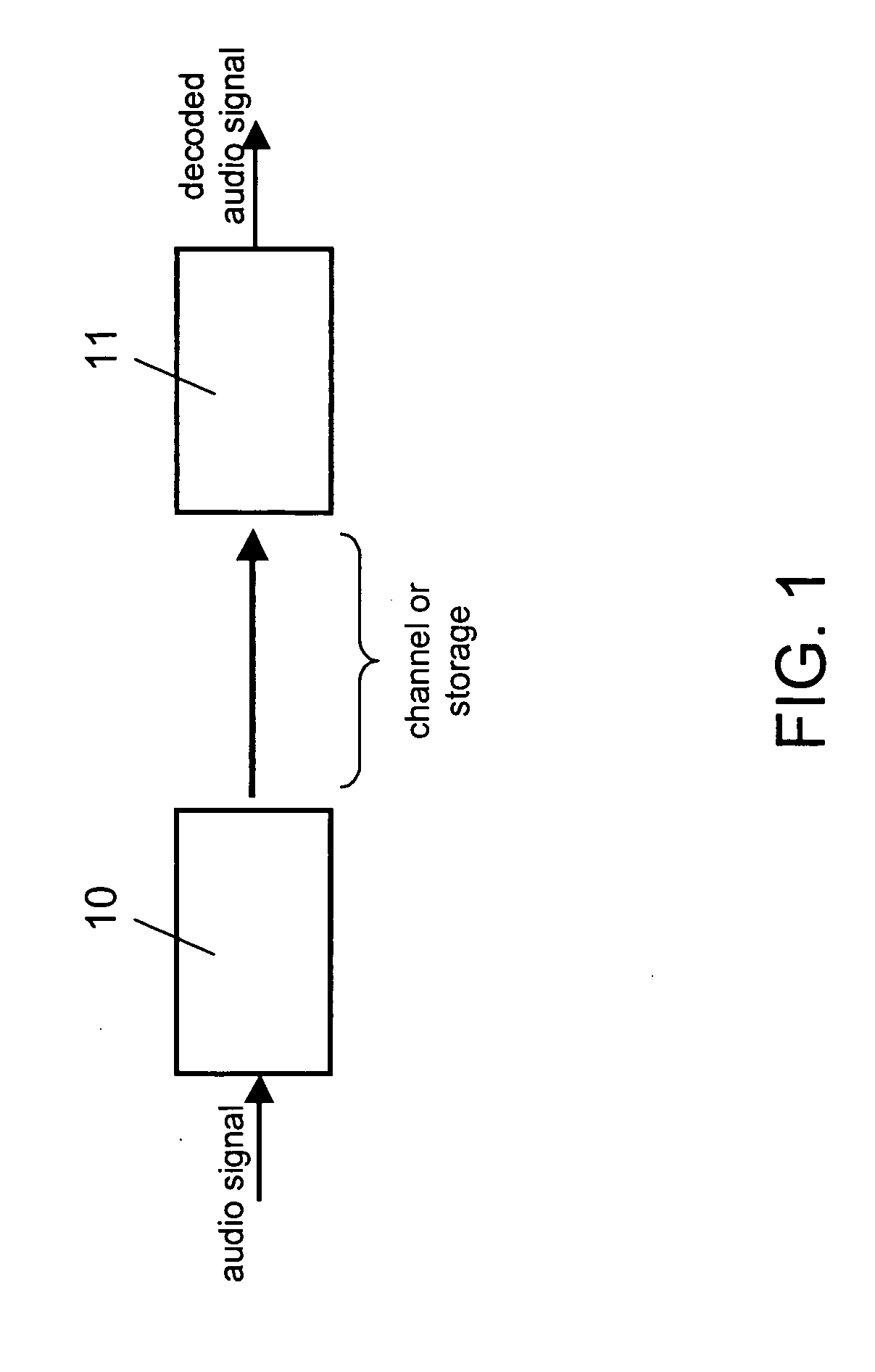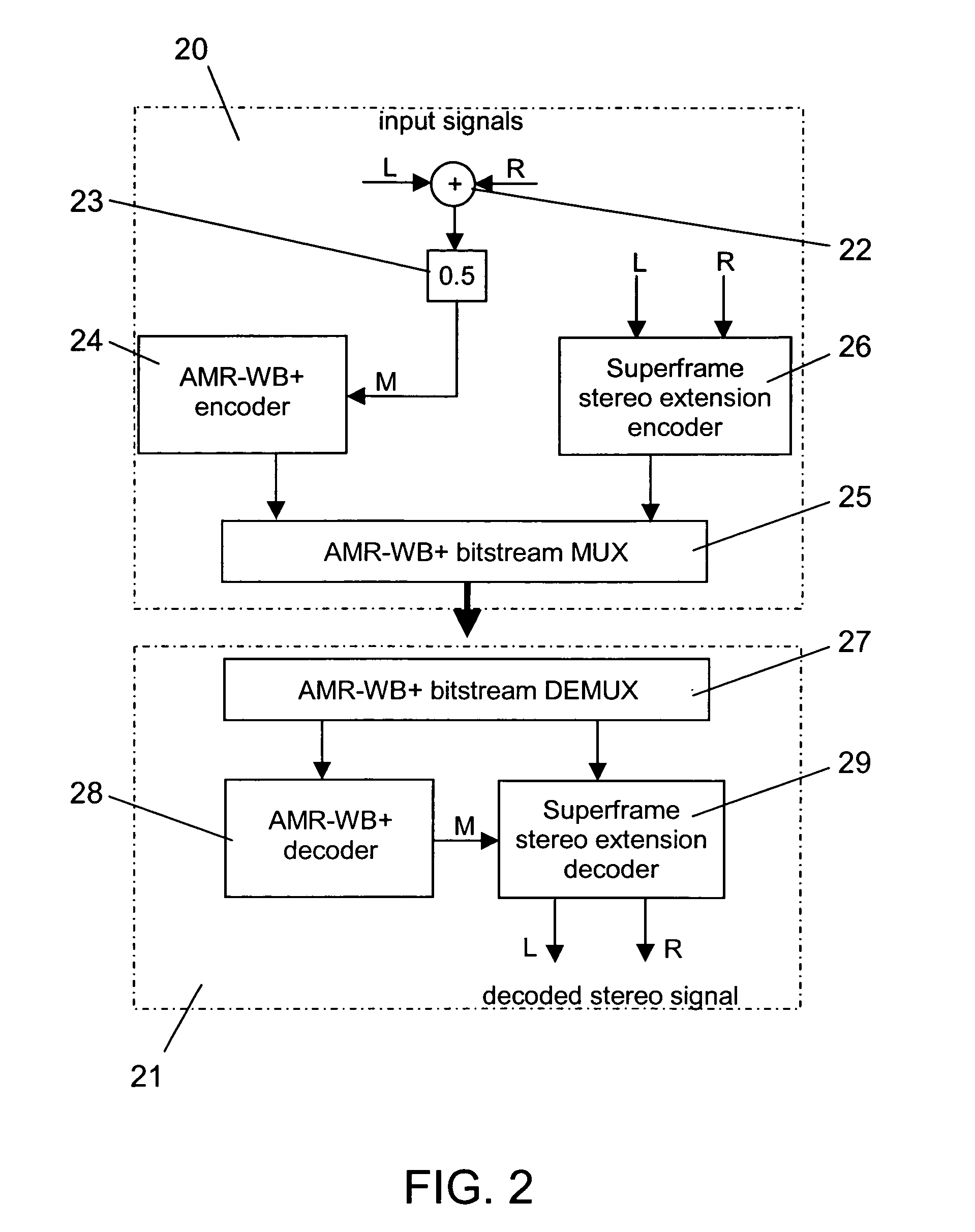Multichannel audio extension
a multi-channel audio and extension technology, applied in the field of multi-channel audio extension, can solve the problem that the exact replica of the original stereo audio signal cannot be obtained in the decoding process, and achieve the effect of improving the reconstruction of the multi-channel signal, reducing bit consumption, and efficient coding
- Summary
- Abstract
- Description
- Claims
- Application Information
AI Technical Summary
Benefits of technology
Problems solved by technology
Method used
Image
Examples
Embodiment Construction
[0051]FIG. 1 has already been described above.
[0052]FIG. 2 presents the general structure of a stereo audio coding system, in which the invention can be implemented. The stereo audio coding system can be employed for transmitting a stereo audio signal which is composed of a left channel signal and a right channel signal. All details which will be given by way of example are valid for stereo signals which are sampled at 32 kHz.
[0053] The stereo audio coding system of FIG. 2 comprises a stereo encoder 20 and a stereo decoder 21. The stereo encoder 20 encodes stereo audio signals and transmits them to the stereo decoder 21, while the stereo decoder 21 receives the encoded signals, decodes them and makes them available again as stereo audio signals. Alternatively, the encoded stereo audio signals could also be provided by the stereo encoder 20 for storage in a storing unit, from which they can be extracted again by the stereo decoder 21.
[0054] The stereo encoder 20 comprises a summin...
PUM
 Login to View More
Login to View More Abstract
Description
Claims
Application Information
 Login to View More
Login to View More - R&D
- Intellectual Property
- Life Sciences
- Materials
- Tech Scout
- Unparalleled Data Quality
- Higher Quality Content
- 60% Fewer Hallucinations
Browse by: Latest US Patents, China's latest patents, Technical Efficacy Thesaurus, Application Domain, Technology Topic, Popular Technical Reports.
© 2025 PatSnap. All rights reserved.Legal|Privacy policy|Modern Slavery Act Transparency Statement|Sitemap|About US| Contact US: help@patsnap.com



